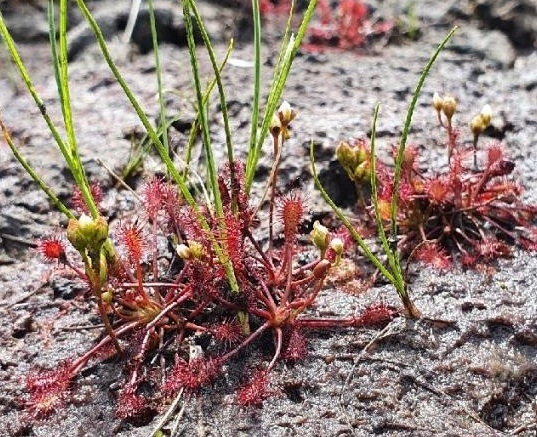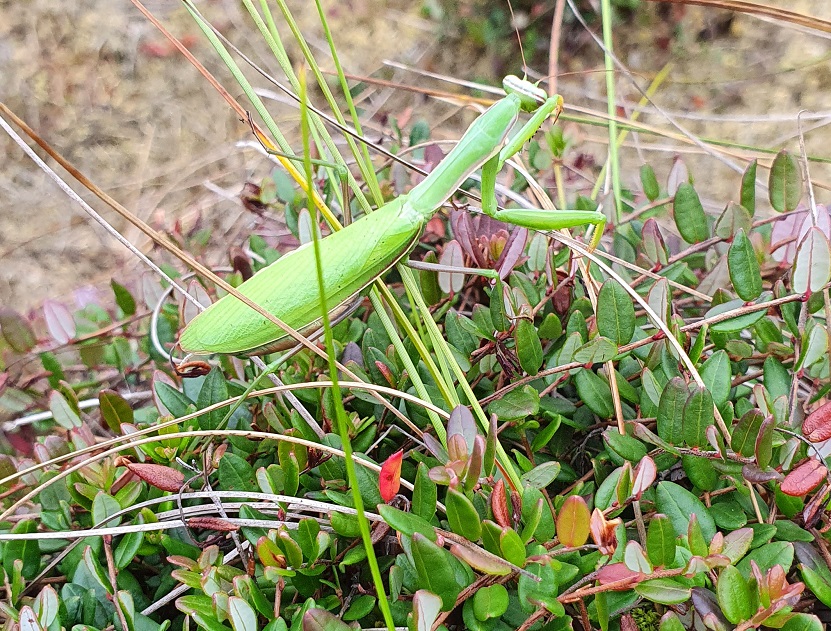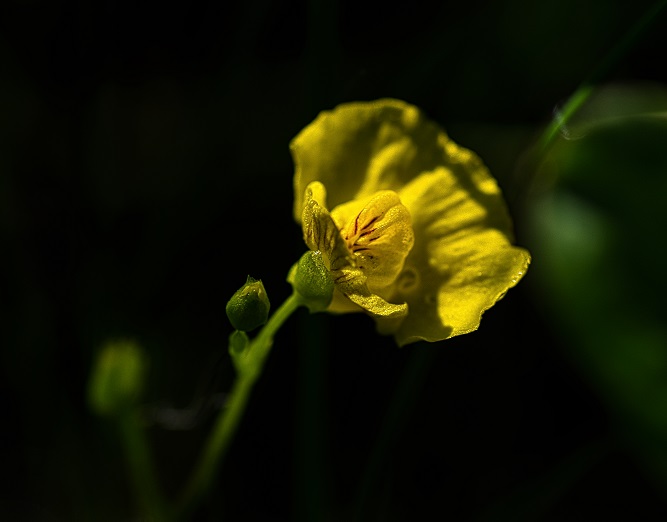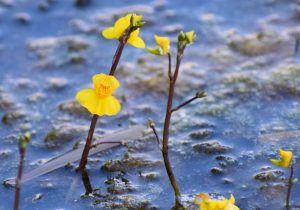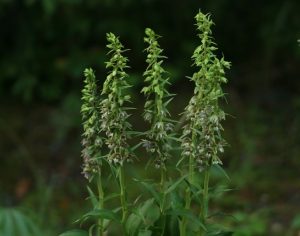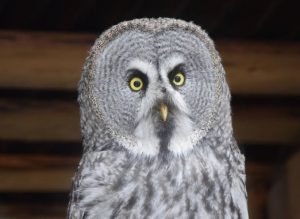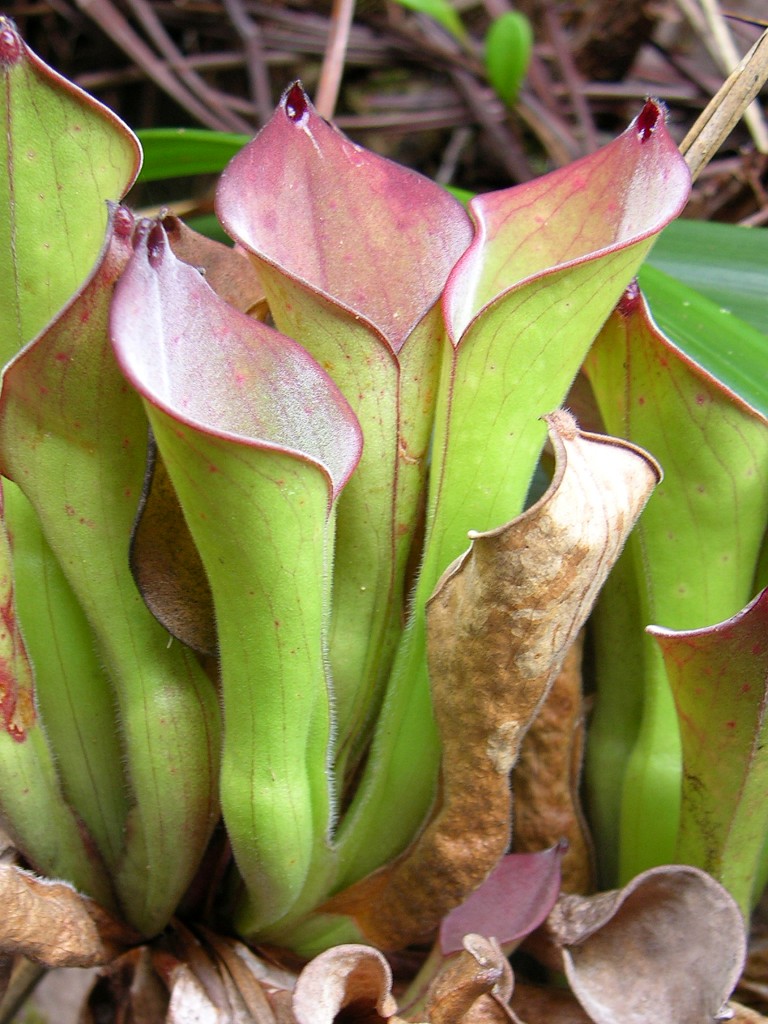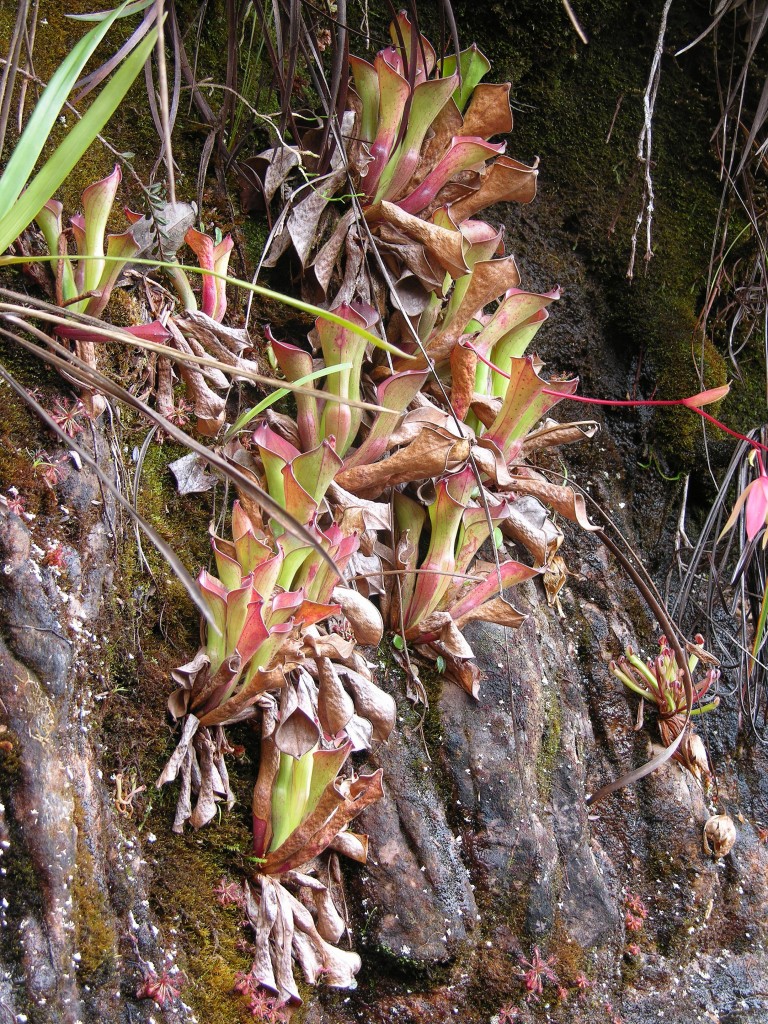On the summits of the spectacular Tepuis of the Guiana Highlands, South America, fifteen species of pitcher plants of the genus Heliamphora have been discovered. One of the least documented and least studied of all is Heliamphora exappendiculata which occurs at the heart of the Guiana Highlands on the Chimanta Massif – a massive complex of gigantic plateaus standing up to 2,600 meters in altitude. Heliamphora exappendiculata was first discovered by famed botanist, naturalists and explored Bassat Maguire who formally described it in 1978. Maguire originally thought that it was a subspecies of a different species of pitcher plant and named in Heliamphora heterodoxa var. exappendiculata, referring to the Latin word ‘ex’ meaning ‘lacking’ and ‘appendicula’ meaning ‘appendage’ in reference to diminutive nectar secreting structure at the back of the pitchers of this species. Recently it had become clear that it is not closely related to Heliamphora heterodoxa as Maguire had originally assumed and in 2006, after previously re-finding the little known plant, German botanists Joachim Nerz and Andreas Wistuba formally renamed the plant as Heliamphora exappendiculata as an independent species.
Still today, Heliamphora exappendiculata remains one of the least studied of all pitcher plants. It has only been observed in the wild on a hand full of occasions. While it was rediscovered growing on the Chimanta Massif, most of these neighbouring mountains have not been extensively explored and it remains unclear how continuously the species occurs across the central plateaus of the Guiana Highlands. Helaimphora exappendiculata is currently known to occur between 1700 and 2100 meters above sea level and is known to hybridize with Heliamphora pulchella.
This spectacular pitcher plant grows most frequently on the cliff sides of narrow river valleys and gorges where it grows anchored to bare rock or thin moss. It often grows in the spray zone of small waterfalls or beneath seepage points where the rock face is kept permanently wet and the humidity is constantly high. The leaf rosettes are held tightly against the cliff face and dense populations form curtains of plants across the rock. The dead pitchers remain attached to the rosette and hang below the living leaves like a skirt. Very often Heliamphora exappendiculata grows in habitat that is heavily shaded by overhanging vegetation and consequently it is highly tolerant of poorly lit conditions and grows healthily in 50% shade although the leaves are pure green except for nectar spoon. Very occasionally Heliamphora exappendiculata also occurs in more open habitat sometimes amidst sparse Bonnetia sp. cloud forest. In these conditions, it receives much more light and the colouration of the pitchers is more intense and turns beautiful shades of orange and red.
The western tepuis of the Gran Sabana are an assemblage of around 80 individual mountains and represent a great array of different ecosystems and habitats. The population of Heliamphora exappendiculata spread across this landscape is not uniform. Indeed the species has adapted and diversified across this vast area and is highly variable in the shape and form of its pitchers. Three varieties of H. exappendiculata have evolved and stabilized.
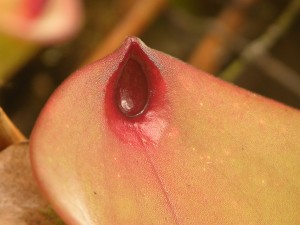
The typical variety of H. exappendiculata; note the position of the nectar spoon on the interior (above) and exterior (below) of the leaf
The pitchers of the most widely distributed and most common variety of this species are distinguished by the position of the nectar spoon. Unlike all other species of Heliamphora the nectar spoon does not project from the apex of the leaf but instead it is set into the back wall of the pitcher. Despite the differences with the other Heliamphora species, the purpose of the nectar spoon remains the same, glands on the interior surface secrete nectar and attract insects to the pitcher. In this typical form the apex of the leaf ends in a slight point, but the nectar spoon does otherwise not extend beyond the end of the pitcher.
Populations of Heliamphora exappendiculata plants growing on a mountain in the Chimanta Massif vary in that the nectar spoon is less inset in the back of the pitcher. The apex of the leaf is elongated and the nectar spoon forms a pronounced point which curls forward slightly. This is the intermediate variety of Heliamphora exappendiculata.
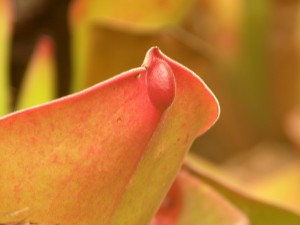 This characteristic is exaggerated in the third form of the species (also from a mountain in the Chimanta Massif). In this variety the nectar spoon is greatly enlarged and curls towards the front of the leaf and terminates in a long narrow hooked point. This is the ‘long lid’ variety of H. exappendiculata.
This characteristic is exaggerated in the third form of the species (also from a mountain in the Chimanta Massif). In this variety the nectar spoon is greatly enlarged and curls towards the front of the leaf and terminates in a long narrow hooked point. This is the ‘long lid’ variety of H. exappendiculata.
These three varieties represent the known spectrum of morphological diversity for this species and possibly illustrate how the nectar spoon characteristic first evolved. The early ancestor of the Heliamphora evolved a patch of nectar secreting glands on the interior surface of the pitcher as a mechanism of attracting potential prey. Gradually this patch of nectar secreting glands specialized and became concave so that nectar could be secreted and retained more efficiently and also be protected from rain (for example as seen in the structure of the typical variety of this species). Over time this characteristic evolved to became more elongated and forward pointing so that the nectar was more protected and more obvious for insects (intermediate variety), eventually giving rise to the ‘long lid’ variety and the nectar spoon characteristic of all other Heliamphora species. Indeed perhaps it is therefore no coincidence that Heliamphora exappendiculata occurs in the centre of the distribution ranges of the different Heliamphora species.
The rest of the leaf of this species varies little between the three known varieties. The pitcher is more or less cylindrical with a funnel shaped upper portion and in most cases, is between 20 – 30 cm tall and 3 – 6 cm wide. The interior of the pitcher is lined with 1 – 2 mm downwards pointing hairs and in some strains the exterior of the leaf is lightly pubescent.
The habitat of the Heliamphora remains remote and largely inaccessible. Vast areas of the Guiana Highlands including most of the Tepui mountains remains to be explored extensively so the potential for more varieties of this spectacular species and the chance of discovering new species of Heliamphora remain high. Hopefully with the ongoing exploration of this remote corner of our world, we will learn more of this fascinating group of pitcher plants.
Heliamphora plants can be purchased from the following sources:
Hampshire Carnivorous Plants Ya Mayla, Allington Lane, West End, Southampton, SO30 3HQ, United Kingdom Website: www.hantsflytrap.com P&J Carnivorous Plants The Hayden, Brampton Lane, Madley, Hereford, HR2 9LX, United Kingdom Website: www.pj-plants.co.uk Sarracenia Nurseries 37 Stanley Park Road, Carshalton, Surrey, SM5 3HT, United Kingdom Website: www.sarracenia.co.ukShropshire Sarracenias 5 Field Close, Malinslee, Telford, Shropshire, TF4 2EH, United Kingdom Website: www.carnivorousplants.uk.com
.
Bibliography:
McPherson, S. 2006. Pitcher Plants of the Americas. Blacksburg, Virginia, The McDonald & Woodward Publishing Company.
Stewart McPherson
